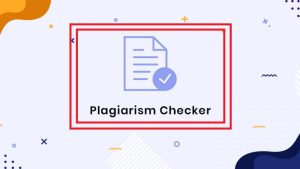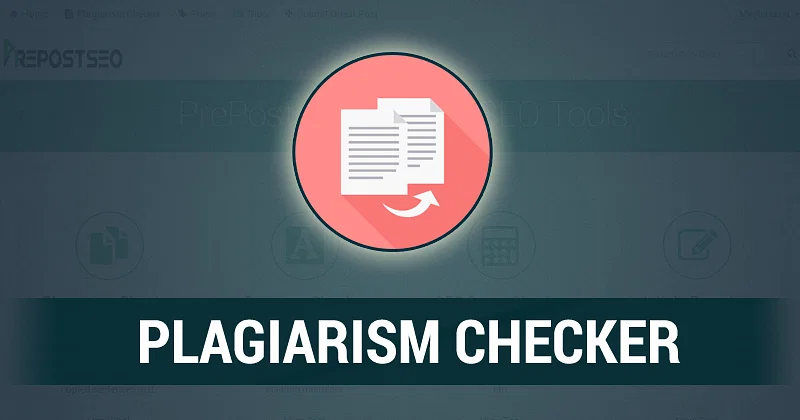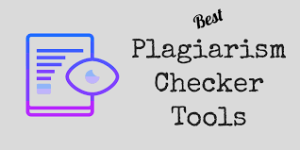Plagiarism is a significant ethical and moral concern in the academic and professional world. Students, educators, writers, researchers, and professionals must ensure that their work is original and does not infringe on others’ intellectual property rights. However, detecting plagiarism checker can be challenging without the help of a reliable plagiarism checker. In this article, we will explore everything you need to know about choosing the best plagiarism checker for your needs.

What is a Plagiarism Checker?
A plagiarism checker is an online software tool that compares written content to a vast database of other written works for similarities. The tool highlights any sentences or phrases that match, indicating potential plagiarism.
In today’s digital age, plagiarism is a growing concern in academia and the professional world. With the ease of access to information on the internet, it’s become increasingly easy for individuals to copy and paste work from others and present it as their own. Plagiarism checkers are developed to combat this issue, providing users with the ability to conduct comprehensive checks of their written work and ensure originality.
Why is a Plagiarism Checker Important?
Plagiarism is a serious offense, and its consequences can be severe. Plagiarism allegations could lead to loss of credibility, legal action, and damage to one’s reputation. Many students, researchers, journalists, bloggers, and other professionals need to write original content regularly. However, it can be challenging to determine if the written work is entirely original or contains unoriginal content.
A plagiarism checker is an essential tool that helps writers ensure they are submitting only original work. With a plagiarism checker, writers can analyze their text for any signs of similarity with other sources on the internet or in academic databases. This tool will highlight any instances where similar content exists in other sources so that the writer can make necessary changes to avoid being accused of plagiarism.
Types of Plagiarism Checkers Available:-
When it comes to plagiarism checkers, there are two main categories: online and offline. Online plagiarism checkers operate on the internet, while offline plagiarism checkers require you to download software and install it on your computer.
Online plagiarism checkers are typically more convenient as they do not require any installation or updates, and they can be accessed from any device with an internet connection. However, online plagiarism checkers may have limitations such as word count limits or restrictions on the file formats that can be checked.
Offline plagiarism checkers tend to be more feature-rich and often offer more robust analysis options. They also tend to have fewer restrictions than online tools, allowing users to submit larger files for analysis without word count limitations or formatting requirements.
Considerations for Choosing the Best Plagiarism Checker for Your Needs:-
Choosing the right plagiarism checker can be a daunting task, especially with the plethora of options available. It is important to consider multiple factors while making your selection. First and foremost, consider the level of plagiarism detection required by you. If you are a student or a blogger, a basic plagiarism checker would suffice. However, if you are an academician or a publisher, it is advisable to opt for an advanced plagiarism checker that offers in-depth analysis and comparison.
The second factor to consider is the pricing model. While there are many free plagiarism checkers available online, they often have limitations on word count and features. Paid options may offer more comprehensive services but can be expensive for some users. It is essential to assess your budget and requirements before making a choice. Do not forget to look out for hidden costs such as subscription fees or additional charges for extra features.
Free vs Paid Plagiarism Checkers:-
One of the most important considerations when selecting a plagiarism checker is whether to go for a free or paid option. While many free plagiarism checkers exist, they often come with limitations such as a limited number of checks per day or an inability to detect more advanced forms of plagiarism.
Paid plagiarism checkers usually offer more comprehensive features and better accuracy rates than their free counterparts. However, it’s important to consider your budget and the frequency with which you will be using the tool before opting for a paid option. If you only need to check occasional documents, then a free tool may suffice. But if you require regular and thorough checks, investing in a paid service may be worth it in the long run.
It’s also worth noting that some universities and organizations may provide access to premium plagiarism checkers for their students or employees, so be sure to check if this is an option before making any purchases.
Top Criteria to Look for in a Plagiarism Checker:-
When choosing a plagiarism checker, there are several criteria that should be considered to ensure that you choose the right tool for your needs. The following are some of the top criteria to consider when selecting a plagiarism checker.
Accuracy:
- The accuracy of a plagiarism checker is one of the most important factors to consider. It is essential to choose a tool that can detect even the slightest traces of plagiarism in your content. An accurate plagiarism checker will help you avoid unintentional copying and provide peace of mind that your work is truly original.
Database Size:
- Another important consideration when selecting a plagiarism checker is the size and quality of its database. The larger and more diverse the database, the more effective the tool will be at detecting instances of copied content. It’s also important to choose a tool with access to up-to-date databases so that it can identify new instances of plagiarized content.
User Interface:
- A user-friendly interface makes all the difference when using any software, including plagiarism checkers. Choose tools with interfaces that are easy to navigate, interpret results clearly, and allow customization options such as selecting specific areas for scanning or target audiences.
Suitability for Your Needs:
- One size does not fit all when it comes to plagiarism checkers. Consider whether you need basic or advanced features based on your writing needs and frequency before choosing a tool. Additionally, if you’re looking for specialized checks such as finding image matchings or audio detections, make sure your chosen software caters for these features.
Top Plagiarism Checkers in the Market:-
When it comes to choosing a plagiarism checker, there are numerous options available in the market, each with its own strengths and limitations. Some of the top plagiarism checkers include Turnitin, Grammarly, Copyscape, Quetext, and PlagScan.
Turnitin is a popular choice for educational institutions due to its extensive database and reputation for accuracy. Grammarly offers not only plagiarism detection but also grammar checking and writing suggestions. Copyscape is a web-based tool that focuses solely on plagiarism detection for online content. Quetext is an affordable option with a user-friendly interface, while PlagScan allows users to upload entire documents for analysis.
Pros and Cons of the Top Plagiarism Checkers:-
When it comes to choosing a plagiarism checker, it is important to weigh up its pros and cons. The top plagiarism checkers in the market have their own unique features that can satisfy your needs. Nevertheless, each plagiarism checker has its own strengths and weaknesses that you need to consider before making a decision.
The Turnitin plagiarism checker has been around for over 20 years and is highly rated by educators worldwide. Its database contains more than 70 billion web pages, journals, books, and student work. One of the major advantages of Turnitin is its ability to detect paraphrasing and other forms of textual manipulation as well as direct copying.
How to Use a Plagiarism Checker Effectively:-
Once you have selected the best plagiarism checker for your needs and preferences, it is important to learn how to use it effectively. Here are some tips:
Firstly, make sure you understand the results of the plagiarism check. Identify any phrases that have been flagged as potentially plagiarized and verify whether they are indeed taken from other sources. It’s also important to review the percentage of originality indicated by the checker and determine whether this meets your requirements.
Secondly, use multiple duplicate checker to validate results. Different checkers may produce different results due to varying algorithms used in detecting plagiarism. Comparing results from multiple checkers can help ensure accurate detection of any potential instances of plagiarism.
Conclusion:-
In conclusion, choosing the best plagiarism checker for your needs can be a daunting task, but it is an essential one. By carefully considering the type of checker you need, the features you require, and your budget, you can select a tool that will help you maintain your academic integrity or protect your content from theft. Always remember to use a plagiarism checker effectively by reading its results carefully and following up on any potential issues. With the right tool at your disposal, you can confidently produce original work while avoiding the pitfalls of plagiarism.






